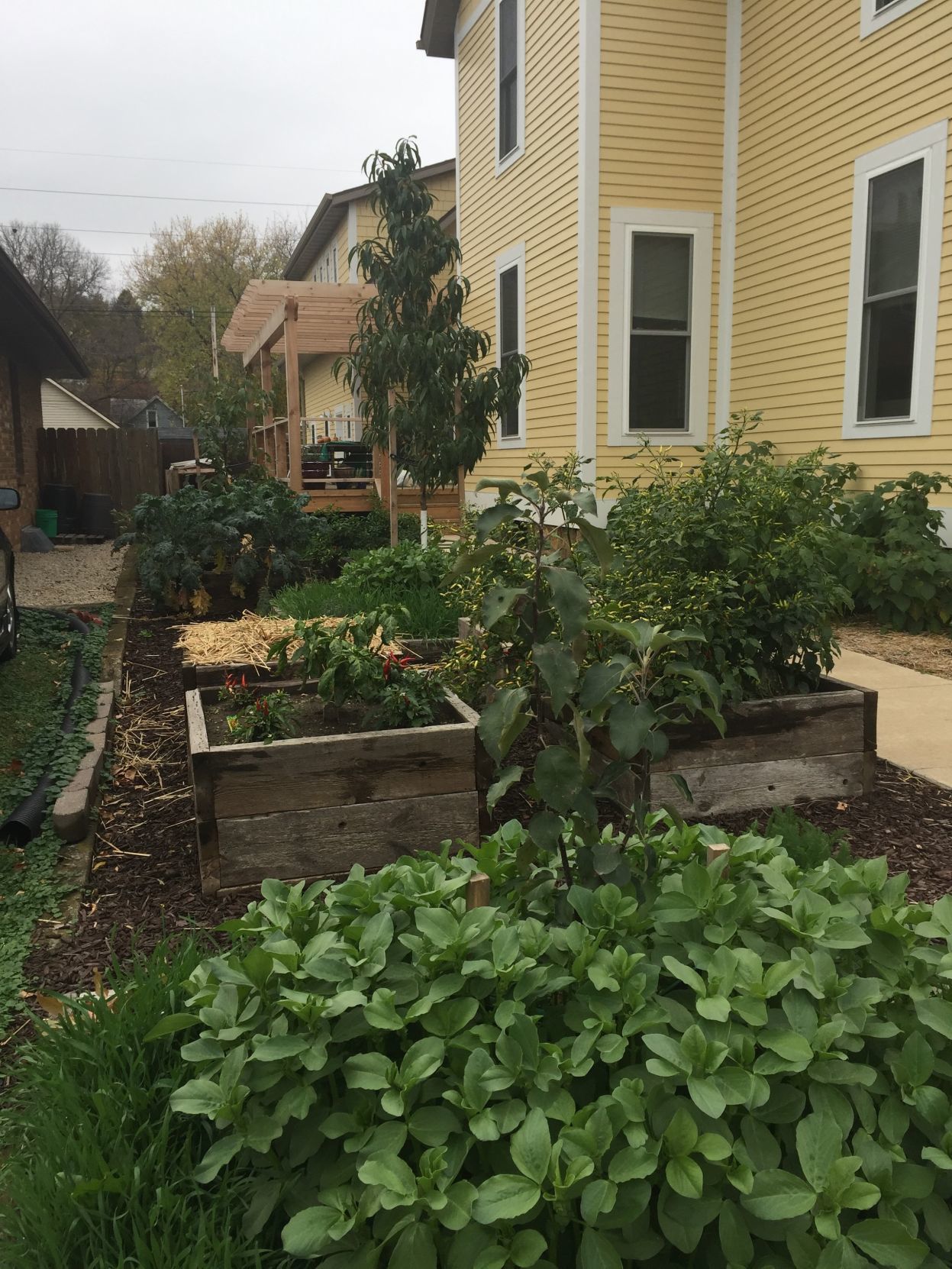For most of us, our landscaping and our vegetable garden (if we have one) are two separate entities. Landscaping — trees, bushes, perennial and annual plantings typically adorn the front of our homes, while the vegetable patch is relegated to the backyard.
But who says is has to be that way? Edible landscaping is the idea of combining these two philosophies. It is the concept of integrating edible plants alongside ornamental ones using the same ingredients found in traditional landscape design.
At our house, our entire yard is edible, with not a blade of grass.
The front walk features a strawberry patch hedge, much beloved by the neighborhood kids, and we have both a raspberry bush hedge and a rhubarb hedge along the west and south walls of our home. We also have three fruit trees and eight planter boxes that we fill with a rotating crop of annual vegetables. The boxes are mulched in between, creating small pathways and eliminating the need for any type of grass or ground cover.
Our yard is very small — it’s really just a side yard of 10-by-30 feet — and we grow a tremendous amount of food in that small space. Our peach tree last year produced more than 50 pounds of peaches.
Now I fully realize that this is a bit extreme, but when you run an organization with the words “urban farm” in the name, it sort of goes with the territory. We purposely want to model what your yard could look like if you chose to grow vegetables rather than lawn.
But even if you didn’t want to take it to this extreme, there are some big benefits if you incorporate even a few vegetable or herb plants into your landscaping plan.
Convenience: Especially when it comes to fresh herbs. How many times have you bought those $2 plastic packs of fresh herbs at the store only to throw most of them away because you needed only 3 tablespoons of fresh mint?
Trust me, having a mint plant (or a mint forest in our yard) is so great. Just step outside, snip what you need and you are in business. The same goes for a fresh tomato or two for BLTs in the summer or a pepper or some green beans.
It is such a great feeling to harvest what you need at the moment you need it.
This leads to another benefit.
Better flavor and nutrition: Picking a fruit or vegetable at its peak ripeness and using it immediately ensures that you are getting the best nutrition from that produce, and it tastes better. A lot of supermarket produce is bred for transportability (not flavor) and is picked unripe, so it ripens on the way to the store.
Resource conservation: Growing vegetables in your yard requires no transportation with its associated costs and emissions. And studies show that homegrown vegetables require less than half the water that large, industrial growers use to produce the same crop.
Food safety: You have complete control and knowledge of where you food is coming from. This reduces or eliminates the chance of contamination (no more killer romaine) and you also have knowledge of what, if any, chemicals were used.
If these benefits do not resonate with you, consider the bigger picture.
Iowa has about 30 million acres that are considered farmland. That represents 92 percent of all available land in the state. Yes, you read that right. We are second to only Nebraska in terms agricultural land. It is estimated that one third of the nation’s best farmland is located in Iowa, according to the Farmland Information Center, a partnership of the USDA.
But Iowa ranks last in the nation for fruit and vegetable consumption, according to the Gallup-Healthways Well-Being Index. Dead last.
So, think about that — we have nearly the most farmland in the nation but eat the fewest number of fruits and vegetables. That farmland is producing corn and soybeans, which then go through a great amount of processing to become food-like substances but not actual food.
That system is not likely to change anytime soon. The industrial food system and industrial farming that goes along with it is ingrained into the fabric of our nation, which isn’t all bad. Thousands of our citizens financially rely on this food system.
This is why we might want to consider taking up our shovels and hoes and starting a little revolution right in our backyards — or perhaps our front yards and grow a few vegetables of our own.
Leslie Shalabi is co-founder of Convivium Urban Farmstead, a Dubuque-based nonprofit organization based on the idea of creating community around food. A lifelong lover of food and entertaining, she is dedicated to helping people find ways to connect through the universal languages of food and hospitality.






















